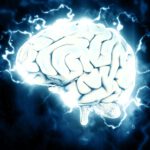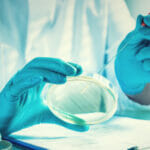NASA’s Hubble Space Telescope is back to normal operations and available for more scientific observations. After the problems with a failed gyroscope, it “returned to normal operations late Friday, Oct. 26, and completed its first science observations on Saturday, Oct. 27,” according to NASA.
The agency’s weekend press release adds that the telescope kept an eye on the galaxy named DSF2237B-1-IR. The gyroscope problems had been limiting the telescope’s functionality and astronomers’ ability to maneuver it in different directions.
“A gyro is a device that measures the speed at which the spacecraft is turning, which is necessary to help Hubble turn and lock on to new targets,” NASA said.
Hubble is back!!! At 9:00 PM EDT last night the spacecraft was returned to normal science operations, and at 2:10 AM EDT today it completed its first science observations since October 5. For more details: https://t.co/lT2Wpycqw2 pic.twitter.com/RIcrSyJ2hF
— Hubble (@NASAHubble) October 27, 2018
Hubble’s gyroscope problems started earlier this month, and NASA shared news the trouble on Oct. 8.
“On [Oct. 5,] the Hubble Space Telescope went into safe mode due to a failed gyro,” NASA announced at the time.
On Friday, the Hubble Space Telescope went into safe mode due to a failed gyro – used to keep the telescope precisely pointed for long periods. Mission experts are taking steps to return Hubble to great science. More updates will follow.
— Hubble (@NASAHubble) October 8, 2018
According to the space agency, one of the older-generation gyroscopes failed after significantly exceeding its originally-expected lifespan. After that, the space agency activated a backup gyroscope of a newer generation on Oct. 6, but then that device “incorrectly returned rotation rates that were far in excess of the actual rates.”
The telescope can now again make more scientific observations, but it took some hard work to return it to normal operation. Last week the Hubble team started moving telescope in different ways “and switched the gyro between different operational modes which successfully cleared what was believed to be blockage between components inside the gyro that produced the excessively high rate values.”
NASA also said it checked to see if the device was secure before adding additional safeguards in case the high rotation rates happen again.
“On Thursday, the operations team conducted further maneuvers to collect gyro calibration data,” NASA said, adding that the telescope “performed activities similar to science observations” one day later.
“Late Friday, the team began the process to restore the scientific instruments to standard operating status,” the space agency added. “Hubble successfully completed maneuvers to get on target for the first science observations, and the telescope collected its first science data since Oct. 5.”
NASA wrote that three of Hubble’s gyroscopes are fully working, making it ready to make more scientific observations.
The Hubble Space Telescope was launched in 1990 and has been used in making many astronomical and astrophysical discoveries. NASA replaced the telescope’s gyroscopes during a servicing mission in 2009, as it was already having problems with faulty gyros before. Hubble requires three gyroscopes for optimal performance; it can function with only one or two, but that limits the range of directions it can target.












